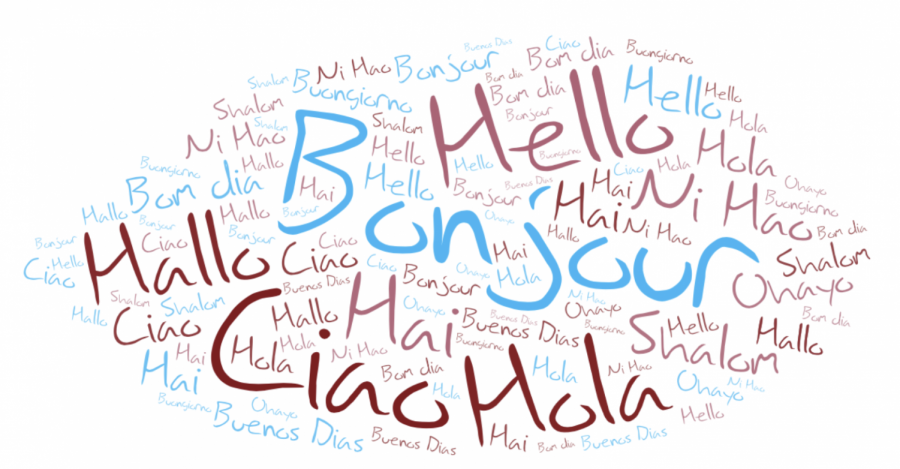The Influence of Language on Learning
February 12, 2021
Influential American linguist Edward Sapir once said, “the worlds in which different societies live are distinct worlds, not merely the same worlds with different labels attached.” According to the Sapir-Whorf hypothesis, the world is perceived differently by people who speak different languages. This is due to language’s effect in shifting a speaker’s attention and subconsciously wiring their brain. But to what extent does the language that a person speaks truly have influence on them?
Language proves to be a very strong determiner of how a child learns. For example, people who speak some Australian languages become better navigators than English-speakers. While an English-speaker will typically say “look over there” or “the building to the left,” these speakers will say “look to the south” or “the building to the west.” Additionally, Chinese-speakers typically learn to count and do simple arithmetic much faster than English-speakers. This is because Chinese numbers often rely on mathematics. For example, English’s “eleven” is Chinese’s “ten one.”
Language not only influences how a person learns but also their perception of the world around them. Many languages, like English and Swedish, often refer to time directionally. Many English speakers will say “it’s behind you” when saying something is in the past or “look ahead” when referring to the future. Similarly, the word for future in Swedish is framtid, which can be broken down into fram and tid, meaning front and time. The language Aymara, spoken in Peru, takes a different approach to how time is seen directionally. Its word for future is qhipuru, meaning behind and time: the exact opposite of its Swedish counterpart. Its logic rests with the fact that no one can see the future, just like no one cannot see behind him or herself. This would put the future behind a person and the past in front of him or her. Mandarin takes an entirely different approach to the spatial recognition of time. When talking about the past and present, Mandarin speakers use the concept of up and down, instead of ahead and behind. For example, they will say “up week” or “down week,” which would be the English equivalent for “last week” or “next week,” and when asked to organize a timeline, they will put the pictures that are first chronologically at the top and the pictures last chronologically at the bottom.
But can language impact beyond how we learn and interpret to what we physically see? Evidence suggests that many languages only developed a word for the color blue quite recently. Blue isn’t a color frequently found in nature. The first civilization to have a word for the color was the Egyptians, who were the first society that produced blue dye. In fact, some languages still do not have a word for the color blue today. The Himba tribe from Namibia constitutes one of these societies that lacks a way to express the color blue in their language. But is that all they lack? For his 2006 study, Jules Davidoff designed an experiment to test whether the Himba tribe could differentiate between the color blue, as we know it, and green. The tribe was given 11 green squares and one blue square. While English speakers had no problem pointing out the blue square, the Himba tribe was mostly unable to. This proves that speakers who lack a way to express a certain color are both unable to express that color and can’t even acknowledge its existence. Unlike English speakers, the Himba tribe has multiple words for green. When the experiment was repeated using 11 squares of one shade of green and one square of a different shade, the Himba tribe was able to pick out the different square immediately, while the English speakers had the same trouble that the Himba speakers did when trying to identify blue.
These studies are both extraordinarily interesting and extremely revealing. They prove the extent to which a child, born with no prior understanding of the world and no dialect, is impacted by the language taught to him or her. Language not only influences the way a person learns, but also how quickly he or she is able to learn certain subjects. In addition to perception of the world and efficiency of learning, language can even influence what a person is able to see, something as simple as many’s favorite color: blue.

















































































































































